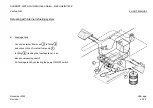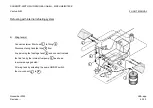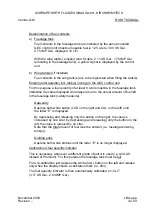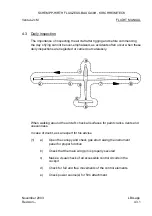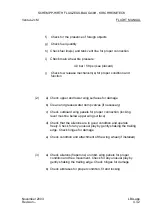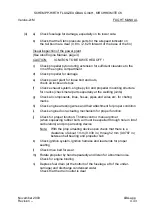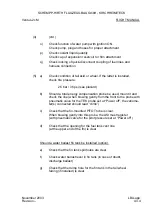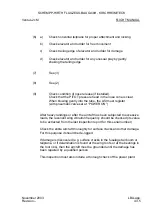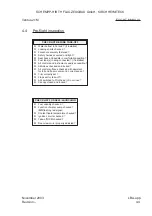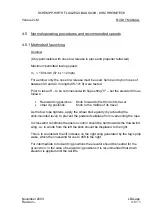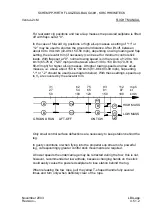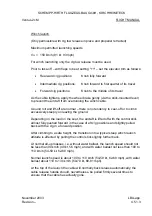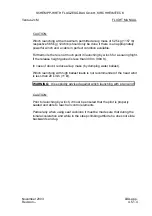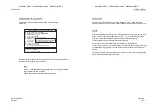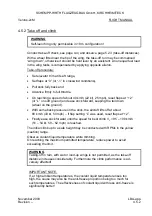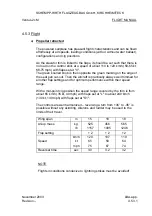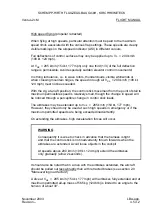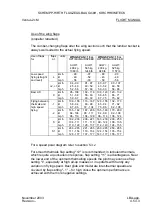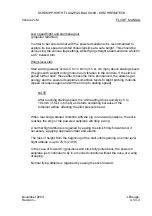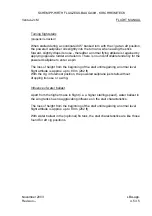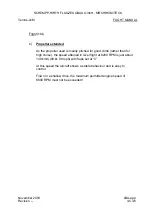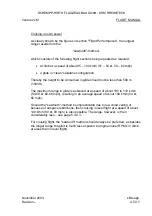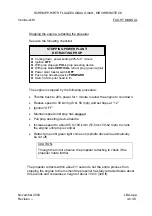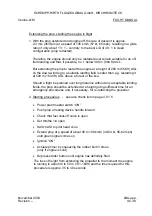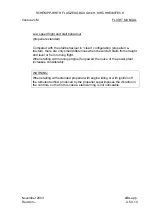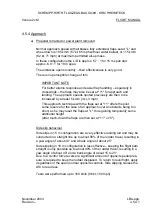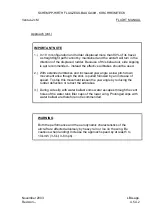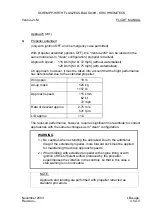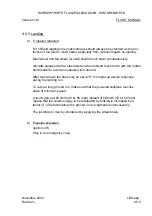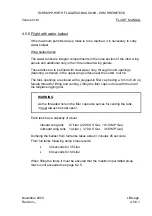
SCHEMPP-HIRTH FLUGZEUGBAU GmbH., KIRCHHEIM/TECK
Ventus-2cM
FLIGHT MANUAL
4.5.2 Take off and climb
WARNING
Self-launching only permissible in 18 m configuration !
Conduct take-off check, see page 4.4) and observe page 5.2.3 (take-off distances).
With a wheel fitted near the tip of the wing, the take-off run may be commenced
“wing down”, otherwise it should be held level by an assistant. An unequal fuel load
in the wing tanks is compensated by applying opposite aileron.
Take-off procedure:
•
Set elevator trim at its aft range,
•
Set flaps at “0” (or “-1” in crosswind conditions),
•
Pull stick fully back and
•
Advance firmly to full throttle.
•
On reaching a speed of about 40 km/h (22 kt), 25 mph), reset flaps at “+ 2”
(or “L” on soft ground) and ease stick forward, keeping the tail down
(wheel on the ground).
•
With some back pressure on the stick, the aircraft lifts off at about
80 km/h (43 kt, 50 mph) – if flap setting “L” was used, reset flaps at “+2”.
•
Finally ease stick forward until the speed for best climb V
Y
= 95 – 100 km/h
(51 – 54 kt, 59 – 62 mph) is reached.
The initial climb up to a safe height may be conducted with RPMs in the yellow
(caution)
range.
Observe coolant liquid temperature while climbing.
On reaching the maximum permitted temperature, reduce power to avoid
exceeding the limit.
WARNING
Taking-off in rain, with wet or iced-up wings is not permitted, as the take-off
distance increases considerably. Furthermore the climb performance is ad-
versely affected!
IMPORTANT NOTE:
If, at high ambient temperatures, the coolant liquid temperature rises too
high, the cause may also be the anti-freeze proportion being too much for
such temperatures. The effectiveness of coolant liquid with less anti-freeze is
significantly better!
November
2003
LBA-app.
Revision --
4.5.2
Summary of Contents for Ventus-2cM
Page 11: ......

